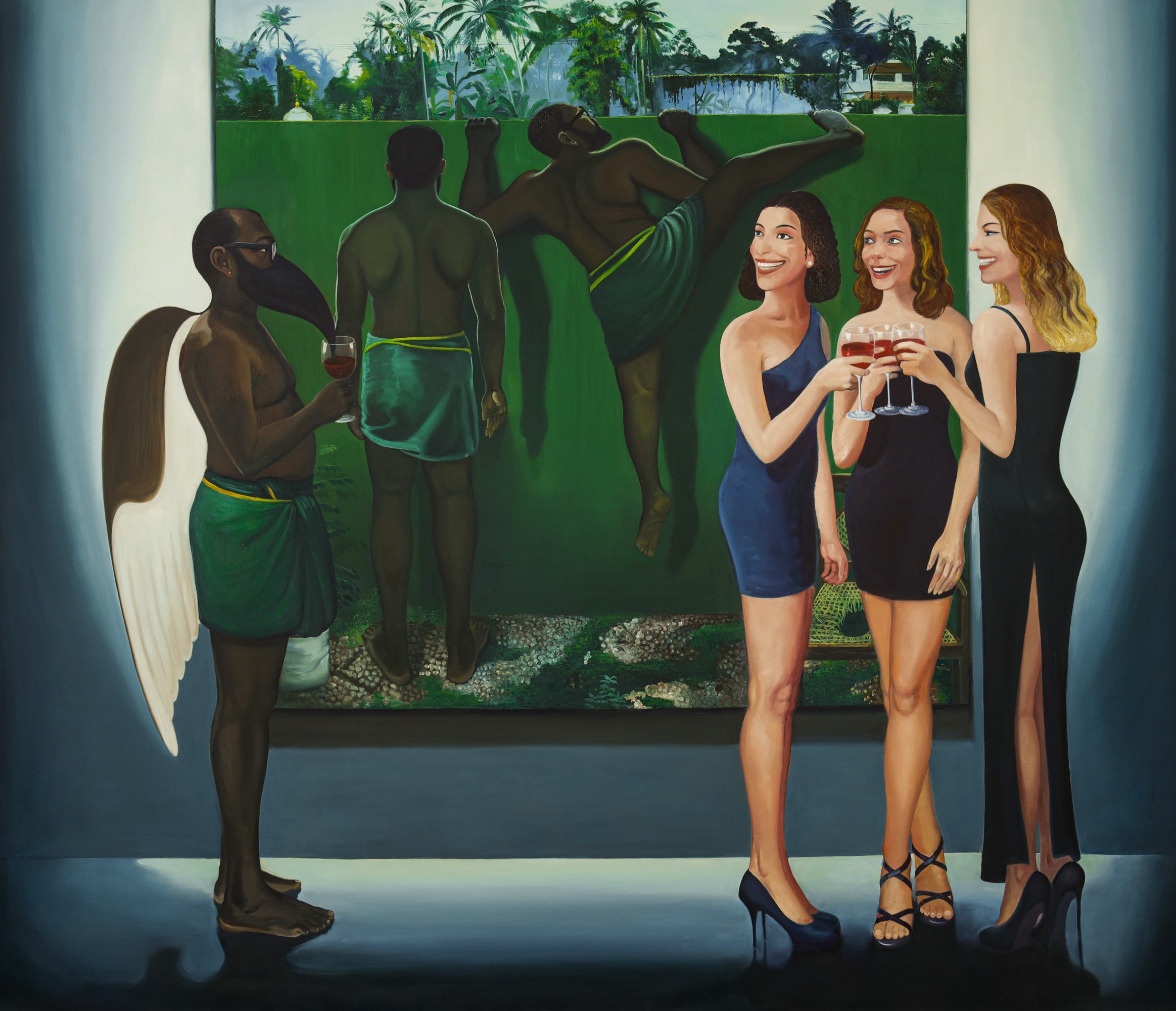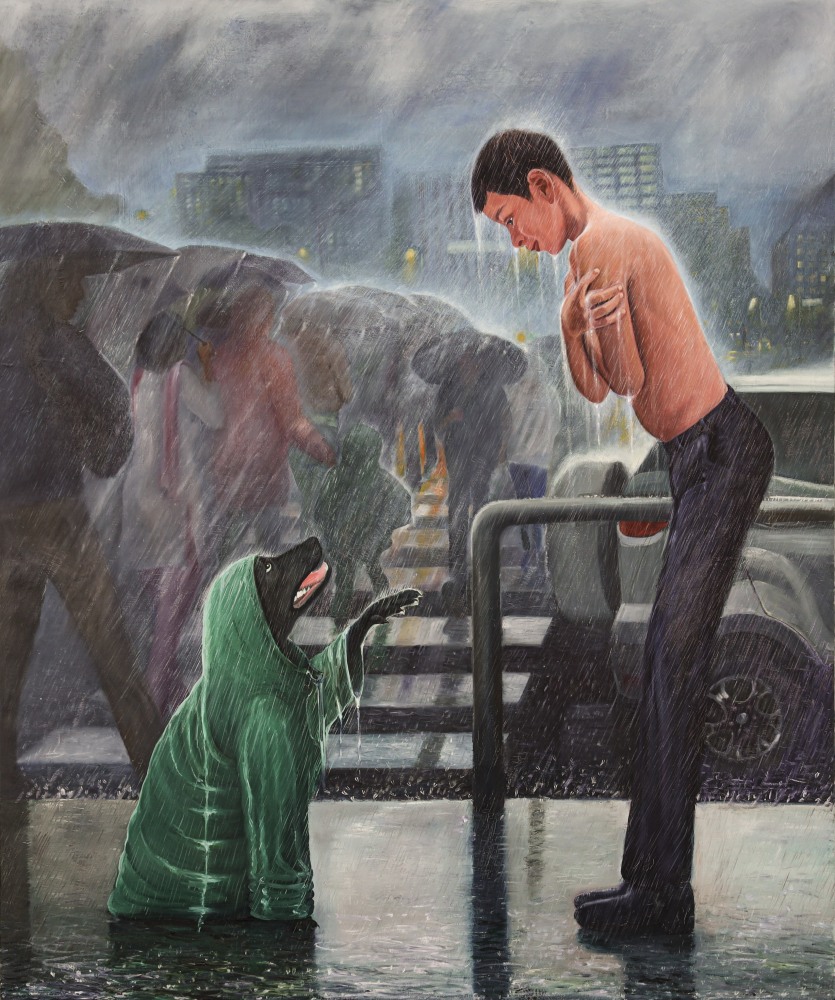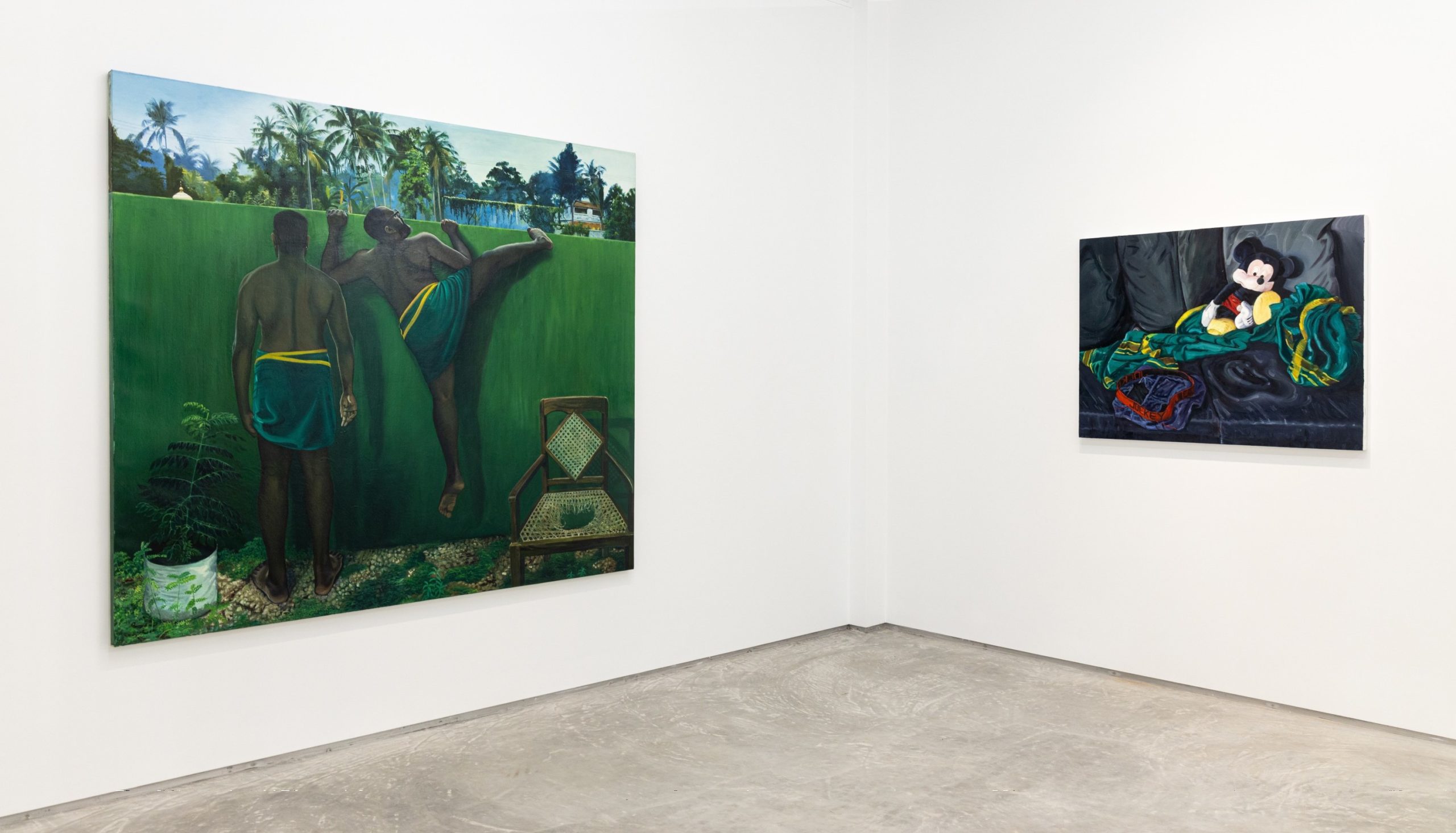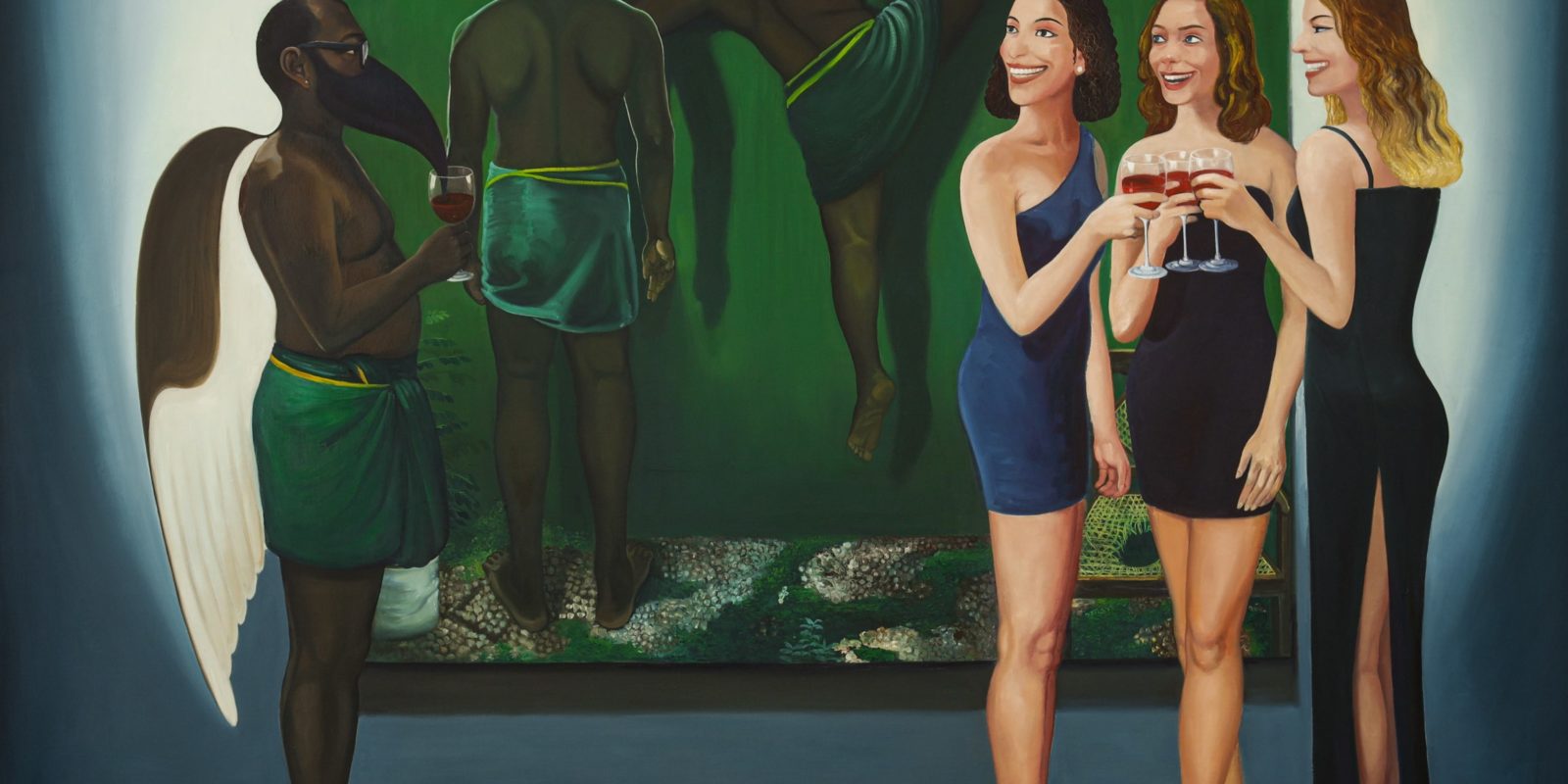HIGHLIGHTS FROM ART NIGHT THURSDAY
Art Night Thursday in Mumbai is keeping the summer busy and eventful with a plethora of striking exhibitions the galleries have laid out with various artists experimenting with themes, mediums, and perception of identity. Here are some shows not to be missed.

Project 88- Approaching Limits, Sandeep Mukherjee till June 1, 2023
Sandeep Mukherjee brings a contemporary twist to his reading of abstraction through his focus on materiality. Approaching Limits is his third solo exhibition at the Project 88 gallery space in Mumbai. With life-sized sculptural forms and acrylic paintings, this new body of work is typical of Mukherjee’s oeuvre. For artist Mukherjee abstraction is a verb. To understand where the artist’s coming from in his approach he encourages his viewers to look at Contemporary abstraction.
“Abstraction in a contemporary context presents a plenitude of (seemingly disparate) visual forms, histories and methods, conceived for a distinct purpose: be it spiritual, gestural, symbolic, structural, or minimal. Yet with each renewed iteration, one question remains: why abstract our reality? Or put differently, how does abstraction continue to serve us today? Far too often, the ‘abstract’ is presupposed as a portal to transcend lived reality – and exist independently – by unlocking a fantastical realm of infinite, unlimited subjective possibilities,” to quote Mukherjee from his catalogue text.


Mukherjee’s approach to abstraction must be grasped in close relation to the materiality of each work; for instance, with an unparalleled technical rigour, he now pushes his painterly limit into the realm of sculptures. Here, material is no longer constrained as a medium or metaphor, but rather, transforms into an active agent within his process of making, and subsequently, into our ways of seeing.
Galerie Mirchandani + Steinruecke- Dark Terrain, Ratheesh T till May 20, 2023
With Dark Terrain, is Trivandrum-based painter Ratheesh T. exploration of the caste politics that underlie many issues faced by Indians who do not belong to the privileged caste—ie the fairer Brahmins caste. For this he turns to his lived experience of societal inequities in his home state of Kerala. “In recent years, the artist’s figural works have moved towards portraiture and the personal, pointedly addressing the agonising prejudices he, his family, and so many others continue to quietly bear, largely due to their darker skin and caste,” writes Beth Citron in the catalogue text. Even while the artist’s reflections ‘shadow broader discourses’, in other words, related issues, he is clear that his gaze is specific and local. It is seen through the intimacy of portrayals that necessarily ‘eclipse global and colonial frameworks’.

One must also acknowledge that his large format oil on canvas works uses a sharp sense of humour and irony when talking about the issues. For instance in the painting The Opening, (clearly referring to the art opening) he reflects on a situation of social awkwardness, where a group of gallery going, wine drinking, clearly upper-caste women are gathered at one corner of one of his painted works smiling and looking at the protagonist (clearly the artist) who appears to be dressed as an avian character with beak and wings in a green lungi with the rest of his dark upper body on display. This work is loaded with caste and gender politics as it speaks of the coming together and the apparent clash of India’s rural-urban divide, the charm and ease of the metropolis that chafes against the grim rootedness of the local—Kerala based idiom.

A gentler version of Ratheesh sense of humour can be glimpsed in the painting Boy with a Dog, where the pet is wearing the raincoat that the boy, who was clearly wearing it before, now stands shirtless covering his naked torso in the downpour. The chances of the dog being more privileged than the boy is ironically-funny as it is unlikely, yet the artist presents us with this situation for our contemplation; spelling out with dark humour that often pedigreed dogs are better off than caste underprivileged humans.
Gallery Maskara – Love Me As I Am – T Venkanna till to May 27, 2023
Nature is a popular theme for the season no doubt, with climate change and the various impacts of non-ecological living has on our planet. With this new body of work, T Venkanna returns to the ‘self’ but it isn’t the narcissistic self, nor is it the prejudiced self, it is the organic self. The ME in Love Me As I AM, is a collective noun that encompasses all sentient beings including nature and the environment. One can more than see this with the lush spread of highly stylized trees and foliage that envelopes his amatory couples. In a world that is increasingly polarised, the artist makes an appeal to love and be loved as per the natural order of things. That love becomes the vehicle through which w reconcile differences of religion, caste, language and class. That love is open and celebrated, irrespective of gender or sexual orientation.

The embroidered surfaces bring to the passionate and often quick articulation of Venkanna’s drawings and paintings, a sense of slowing things down, a patiently worked over surface that is both aesthetically breathtaking but also employed with his wry sense of humour that brings to seemingly innocuous compositions a twist of his dark wit.
DAG- Living Traditions and the art of Jamini Roy till 22 May, 2023
It is said that artist Jamini Roy slipped into the traditional art set up of Bengal without causing too many ripples. The ease with which he applied his training in academic painting of the Colonial times to the Kalighat Pats and the simplicity of the Santhal lifestyle, Jamini Roy immersed himself in painting their music and dance traditions, creating endearingly simple images of the mother and child, turning to mythology—both Hindu and Christian—for incidents to recount that held universal appeal.

“His work is built on solid ground, open and without pretence… based on universals of form which are understood by all who know art, whether from the Eas or the West… the art of Jamini Roy serves the living Bengal,” wrote Stella Kramrisch, an admirer of his work.
Roy drew from that living traditions of Bengal—terracotta and wooden toys in village haats, the Bankura horse, friezes from the terracotta temples of Bishnupur, the scroll painters who painted in the folk tradition, and, of course, the water-colour Kalighat pats, which arguably his most popularly quoted reference, all play an important role in Roy’s work and keep alive and in the realm of high art, all the traditional references of Bengal.

Whether it is the cat with the lobster in its mouth or the Devi mounted on the Naag, the mother and child or the realistic painting of a deserted tenement-block street rendered in tempera on board, that captures his early work (which is also a national treasure) Roy has a larger than life presence that crosses generations, styles and traditions.
TARQ- Edifice Complex, Sameer Kulavoor till 10 June 2023
Artist Sameer Kulavoor’s practice encompasses his unique observations of spaces, structures and geographies. His nuanced compositions, feature sequential drawing and reverse painted transparent sheets, which underscore his affinity towards big cities and their multi-layered identities. In this exhibition, at TARQ, architecture is once again the main protagonist.
Titled ‘Edifice Complex’ it takes a page out of the phrase coined by Behn Cervantes, a Filipino activist writing in the time of the autocrat Ferdinand Marcos. It references the phenomenon where individuals, organisations, or governments become obsessed with building grandiose structures to give an impression of power, status or progress, often at the expense of more pressing needs.

With Drawn Time-lapses, a series of sequential drawings that are presented in tandem with a video, Kulavoor reflects on the idea of condensed time, with structures being in a constant state of flux. Here, the artist shares a zoomed-in experience of elements that form complex city structures and their temporal progression.

The idea of the city-space is humorously tossed around, in the Time-lapses where an object changes and moves from being a pipe on wall to becoming a window on a wall, to collapsing into a box and finally morphing into an incinerator pipe. The human figure emerges sporadically in this narrative as does the city as a map. The elements of animation and movement have been well utilised by Kulavoor in his series. What he evokes is the elements of city life but finally their destruction and how they transform to waste.
The notion of time is more important than the narrative itself, but one can definitely read in a story or thought that is underlying the imagery. As is the case with the imagery Outside the Gated Community, that clearly makes a statement on class and exclusive spaces designated for the upper class, and the working class, which is often a lived reality for many who inhabit cities like Delhi and Mumbai.
Text by Georgina Maddox
Images Courtesy: Project 88, Gallery Maskara, Galerie Mirchandani-Dark Terrain, DAG, and TARQ
Find out more about Art Night Thursday:





